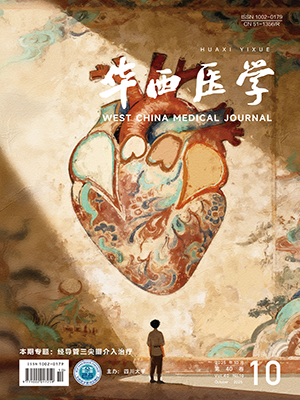| 1. |
黄炎,孔荣, 方诗元, 等. 人工全髋关节置换术后脱位的原因分析和防治对策[J]. 中国矫形外科杂志, 2009, 17(5):333-335.
|
| 2. |
杜江, 于晨, 井耀华. 老年患者人工髋关节置换术后并发症分析[J]. 医药前沿, 2013(1):191-192.
|
| 3. |
梅汉尧, 索鹏, 周永顶, 等. 初次人工髋关节置换术后感染的诊断与治疗[J]. 实用骨科杂志, 2006, 12(4):298-299.
|
| 4. |
Blom AW, Rogers M, Taylor AH, et al. Dislocation following total hip replacement:the Avon Orthopaedic Centre experience[J]. Ann R Coll Surg Engl, 2008, 90(8):658-662.
|
| 5. |
Parvizi J, Picinic E, Sharkey PF. Revision total hip arthroplasty for instability:surgical techniques and principles[J]. J Bone Joint Surg Am, 2008, 90(5):1134-1142.
|
| 6. |
吴义龙, 梁国伟, 杨景芳, 等. 人工髋关节置换术后早期脱位原因探讨及预防[J]. 实用骨科杂志, 2007, 13(8):479-480.
|
| 7. |
吕厚山. 现代人工关节外科学[M]. 北京:人民卫生出版社, 2006:599.
|
| 8. |
苏冰梅, 苏冰莲, 谭富海. 全髋关节置换术后髋关节脱位的危险因素分析及护理对策[J]. 中国实用护理杂志, 2012, 28(21):39-40.
|
| 9. |
张连英, 姜世平. 髋关节置换术后假体脱位原因分析及护理[J]. 实用临床医学, 2011, 12(1):116-117.
|
| 10. |
唐相君, 罗娟. 人工髋关节置换术后脱位的风险因素及护理干预[J]. 四川医学, 2011, 32(5):788-790.
|
| 11. |
Newington DP, Bannister GC, Fordyce M. Primary total hip replacement in patients over 80 years of age[J]. J Bone Joint Surg (Br), 1990, 72-B(3):450-452.
|
| 12. |
Woo RY, Morrey BF. Dislocations after total hip arthroplasty[J]. J Bone Joint Surg (Am), 1982, 64(9):1295-1306.
|
| 13. |
Biedermann R, Tonin A, Krismer M, et al. Reducing the risk of dislocation after total hip arthroplasty:the effect of orientation of the acetabular component[J]. J Bone Joint Surg (Br), 2005, 87(6):762-769.
|
| 14. |
熊涛. 人工髋关节置换手术并发症分析[J]. 华西医学, 2006, 21(4):755-756.
|
| 15. |
焦建, 范树枫, 刘元禄. 人工髋关节翻修术15例临床分析[J]. 中医正骨, 2006, 18(3):48-49.
|
| 16. |
徐杨博, 尚庆, 葛建华. 高龄全髋关节置换术后脱位的防治[J]. 中国骨与关节损伤杂志, 2008, 23(10):865-866.
|
| 17. |
李凤朝, 李子荣. 髋关节置换术后假体脱位的防治[J]. 中国矫形外科杂志, 2009, 17(9):674-676.
|
| 18. |
孙宁, 郝云甲, 王佳音, 等. 高龄人工髋关节置换术后脱位的原因及处理对策[J]. 中国老年学杂志, 2013, 33(5):1185-1186.
|
| 19. |
杨文婷, 雷寿斌, 张晓琼. 髋关节置换围手术期护理与康复[J]. 按摩与康复医学, 2011, 2(11):124.
|
| 20. |
张志, 张飞, 张宵雁. 全髋关节置换术后脱位的原因分析及防治[J]. 中国现代医学杂志, 2012, 22(1):94-96.
|




